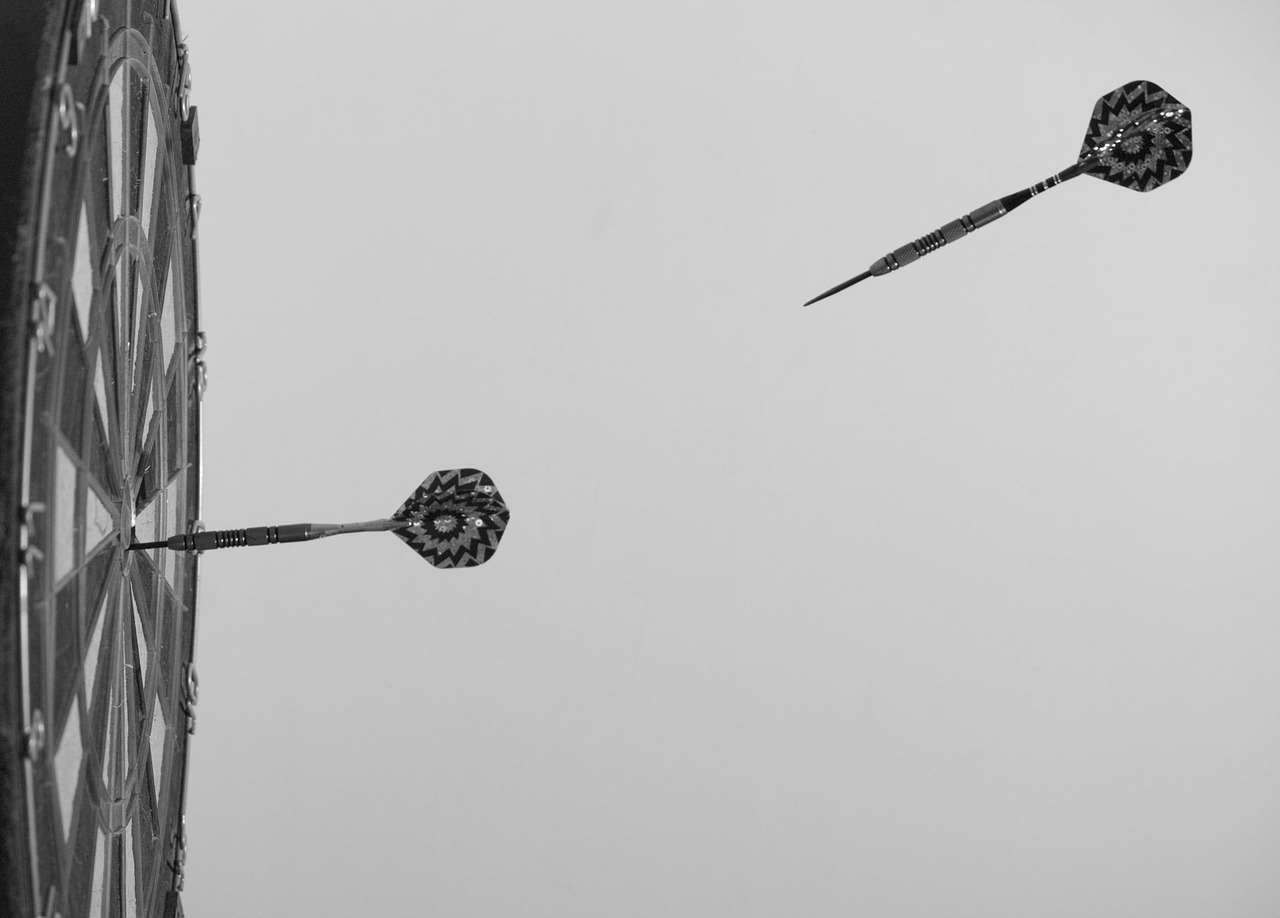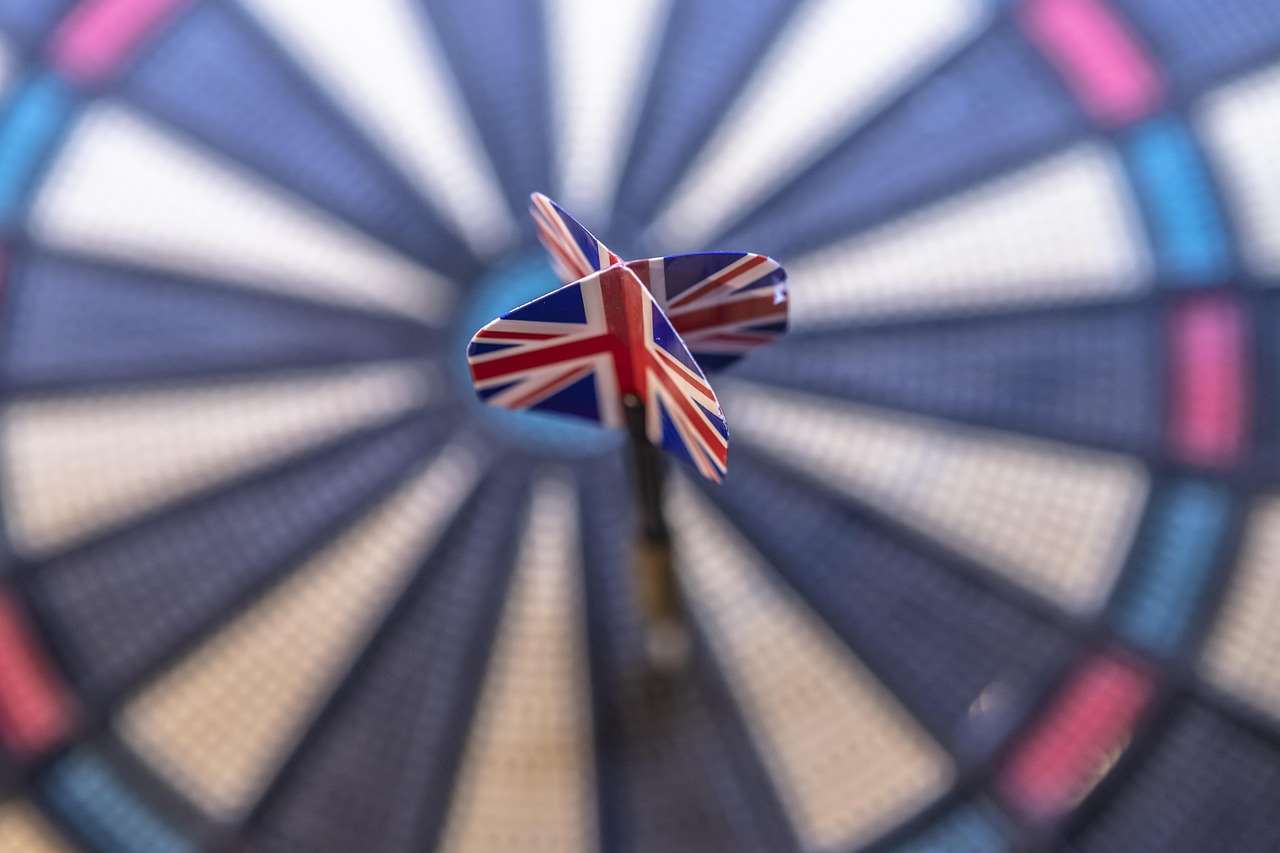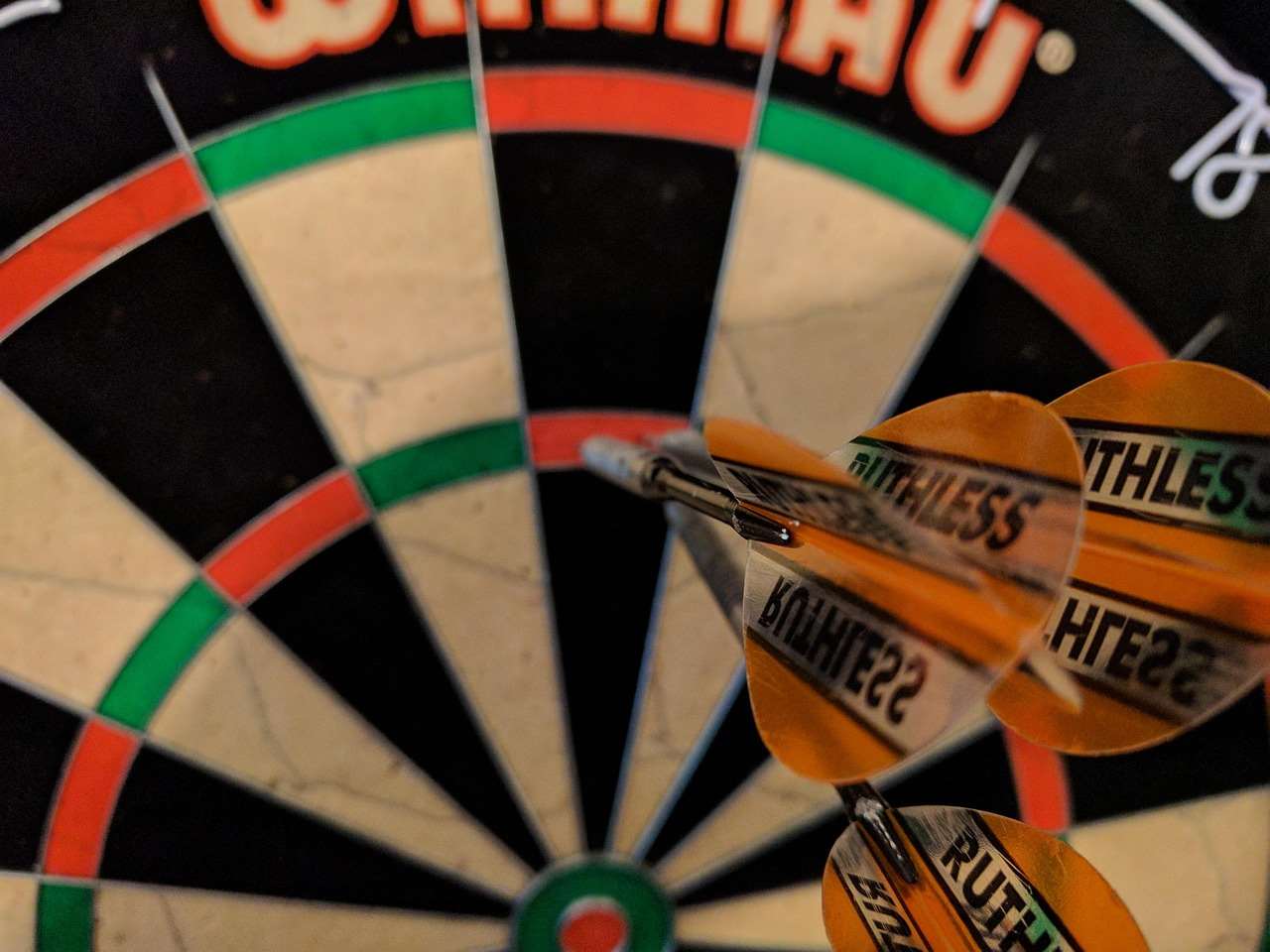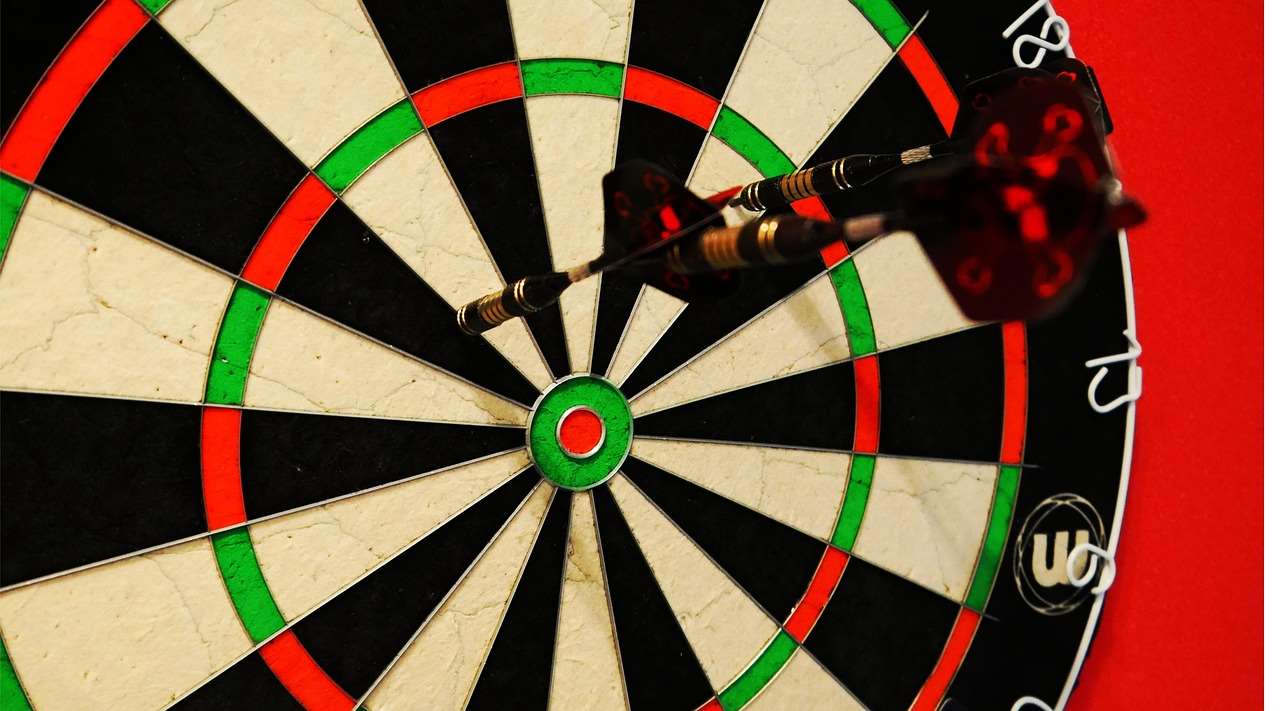Mastering darts isn’t about inherent talent; it’s about consistency, and that begins with discovering your unique throw. This article will guide you on how to find your darts throw, focusing on stance, grip, and release. You’ll also learn to diagnose common issues and refine your technique through dedicated practice.
⚠️ Still Using Pen & Paper (or a Chalkboard)?! ⚠️
Step into the future! The Dart Counter App handles all the scoring, suggests checkouts, and tracks your stats automatically. It's easier than you think!
Try the Smart Dart Counter App FREE!Ready for an upgrade? Click above!
Discovering Your Perfect Stance: The Foundation of Your Throw
Your stance is the bedrock upon which your entire throw is built. A stable and balanced stance allows for consistent weight distribution and minimizes unnecessary movement. There’s no single “correct” stance, but understanding the principles will help you tailor it to your body and preferences. A good stance will set you up for the whole throw, so it’s important to understand how.
Finding Your Foot Placement
Experiment with different foot positions to find what feels most natural and balanced. Here are a few common approaches:
- Straight On: Both feet are parallel to the oche (the throwing line). This offers maximum stability but can restrict your upper body movement.
- Slight Angle: One foot is slightly ahead of the other, creating a more open stance. This allows for greater upper body rotation and can improve your sight line.
- Side On: One foot is significantly ahead of the other, almost perpendicular to the oche. This maximizes upper body rotation and can be beneficial for players with a long, flowing throw.
Pay attention to your weight distribution. You should feel balanced and stable, with your weight primarily on the balls of your feet. Avoid leaning too far forward or backward. For related dart equipment, you might want to explore target darts amazon uk.
Maintaining Balance and Posture
Good posture is crucial for a consistent throw. Keep your back straight and your shoulders relaxed. Avoid hunching or slouching, as this can affect your balance and restrict your arm movement. Your head should be held high, with your eyes focused on the target. Experimenting with the stance and balance is key for players to **how to find your darts throw**.

The Grip: Your Connection to the Dart
The grip is your direct interface with the dart, and it plays a significant role in control and accuracy. Again, there’s no universally “best” grip; it’s about finding what feels comfortable and allows you to release the dart smoothly and consistently.
Experimenting with Different Grip Styles
Here are some common grip styles to try:
- Two-Finger Grip: This is a minimalist grip that emphasizes feel and control. The dart is held between the thumb and one finger, with the other fingers providing minimal support.
- Three-Finger Grip: This is a more common grip that offers a good balance of control and power. The dart is held between the thumb and two fingers, with the other fingers providing support.
- Four-Finger Grip: This grip provides maximum control but can also restrict your release. The dart is held between the thumb and three fingers, with the remaining finger providing support.
- Pencil Grip: This grip is similar to how you would hold a pencil.
The key is to find a grip that feels natural and allows you to release the dart without gripping too tightly. A tense grip can lead to erratic throws.
Finding the Right Pressure
Grip pressure is just as important as grip style. You want to hold the dart firmly enough to maintain control, but not so tightly that you restrict your movement. Experiment with different levels of pressure until you find the sweet spot. A great tip is to try the grip that feels most natural, this will provide help to **how to find your darts throw**.
Consider the barrel of the dart. Some barrels are knurled, offering more grip. Others are smooth. Choosing a dart with a barrel that complements your grip style can improve your control. You might want to compare cheap darts vs expensive darts to see what works best for you.
Mastering the Release: The Key to Accuracy
The release is the culmination of your throw, and it’s where your accuracy is ultimately determined. A smooth, consistent release is essential for hitting your target. This is a critical step in **how to find your darts throw**.

The Importance of a Smooth Follow-Through
A good follow-through ensures that you impart the correct trajectory and spin on the dart. After releasing the dart, continue your arm motion towards the target. Your hand should finish pointing in the direction you want the dart to go. Avoid stopping your arm abruptly after releasing the dart, as this can disrupt your throw.
Developing a Consistent Release Point
Your release point should be consistent from throw to throw. This means releasing the dart at the same point in your arm motion each time. Practice in front of a mirror to monitor your release point and make sure it’s consistent. Using an Automatic dart scoring app can help you track your progress and identify areas for improvement. The consistency of the release point can be the solution to **how to find your darts throw**.
Focus on releasing the dart with a smooth, fluid motion. Avoid jerking or snapping your wrist, as this can lead to inconsistent throws.
Common Mistakes to Avoid
Here are some common mistakes that can affect your release:
- Gripping the Dart Too Tightly: This can cause tension in your arm and affect your release.
- Snapping Your Wrist: This can lead to inconsistent throws and loss of control.
- Stopping Your Arm Abruptly: This can disrupt your throw and affect your accuracy.
- Not Following Through: This can prevent you from imparting the correct trajectory and spin on the dart.
Diagnosing Common Throwing Issues
Even with a solid stance, grip, and release, you may still experience inconsistencies in your throw. Learning to diagnose common issues can help you identify the root cause of your problems and make the necessary adjustments. Understanding where throws are failing can help you **how to find your darts throw**.

Analyzing Your Dart Trajectory
Pay attention to the trajectory of your darts. Are they flying straight, or are they veering to the left or right? Are they landing high or low on the board? The trajectory of your darts can provide valuable clues about your throwing technique.
- Darts Flying to the Left: This could indicate that you’re releasing the dart too late or that you’re pulling your arm across your body.
- Darts Flying to the Right: This could indicate that you’re releasing the dart too early or that you’re pushing your arm away from your body.
- Darts Landing High: This could indicate that you’re not following through properly or that you’re releasing the dart too high.
- Darts Landing Low: This could indicate that you’re dropping your elbow during your throw or that you’re releasing the dart too low.
Adjusting Your Technique Based on the Diagnosis
Once you’ve identified the cause of your throwing issues, you can start making adjustments to your technique. This may involve changing your stance, grip, release point, or follow-through. Be patient and persistent, as it may take time to find the adjustments that work best for you. Some players might want to see what is the best brand of darts is and it might help their throws.
Practice Drills for Refining Your Throw
Consistent practice is essential for developing a reliable and accurate throw. Dedicate time to practice drills that focus on specific aspects of your technique. Here’s more help to **how to find your darts throw** with useful and consistent practices.

Target Practice Drills
Focus on hitting specific targets on the board. Start with the double 20, as this is a crucial target in many games. Then, move on to other doubles and trebles, as well as the bullseye. Vary your targets to challenge yourself and improve your accuracy across the board.
Consistency Drills
These drills focus on maintaining a consistent throw. Try throwing a set number of darts at the same target and try to group them as tightly as possible. This will help you develop a feel for your throw and improve your consistency.
Mental Game Drills
The mental game is just as important as the physical game in darts. Practice visualizing your throws and focusing on your target. Develop a pre-throw routine that helps you relax and focus before each throw. This will help you stay calm and confident under pressure.
Equipment Considerations: Choosing the Right Darts and Setup
While technique is paramount, your equipment can also impact your throw. Selecting the right darts and setting up your board correctly are important for maximizing your performance. This will affect the overall result of **how to find your darts throw**.

Choosing the Right Darts
Darts come in a variety of weights, shapes, and materials. Experiment with different types of darts to find what feels most comfortable and allows you to throw consistently. Consider the following factors:
- Weight: Darts typically range from 18 to 30 grams. Heavier darts tend to be more stable, while lighter darts can be easier to control.
- Shape: Darts come in a variety of shapes, including torpedo, straight barrel, and bomb. The shape of the dart can affect its flight characteristics and how it feels in your hand.
- Material: Darts are typically made from brass, nickel silver, or tungsten. Tungsten darts are denser and more durable than brass or nickel silver darts.
Setting Up Your Dartboard Correctly
Ensure your dartboard is hung at the correct height (5 feet 8 inches to the bullseye) and distance from the oche (7 feet 9 1/4 inches). An improperly set up dartboard can affect your aim and throw. For enhanced performance, consider the blade 6 triple core dartboard.
Conclusion: Your Journey to Throwing Darts Like a Pro
How to find your darts throw is a personal journey that requires dedication, experimentation, and consistent practice. By focusing on your stance, grip, release, and mental game, you can develop a reliable and accurate throw that will help you excel in darts. Remember to analyze your throwing issues, adjust your technique accordingly, and practice regularly to refine your skills. With the right approach and commitment, you can unlock your full potential and throw darts like a pro. Now that you’ve learned the fundamentals, step up to the oche, apply these techniques, and start your journey to becoming a more skilled darts player!
Hi, I’m Dieter, and I created Dartcounter (Dartcounterapp.com). My motivation wasn’t being a darts expert – quite the opposite! When I first started playing, I loved the game but found keeping accurate scores and tracking stats difficult and distracting.
I figured I couldn’t be the only one struggling with this. So, I decided to build a solution: an easy-to-use application that everyone, no matter their experience level, could use to manage scoring effortlessly.
My goal for Dartcounter was simple: let the app handle the numbers – the scoring, the averages, the stats, even checkout suggestions – so players could focus purely on their throw and enjoying the game. It began as a way to solve my own beginner’s problem, and I’m thrilled it has grown into a helpful tool for the wider darts community.